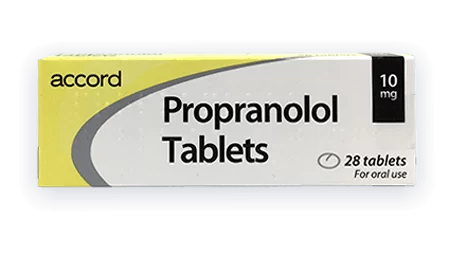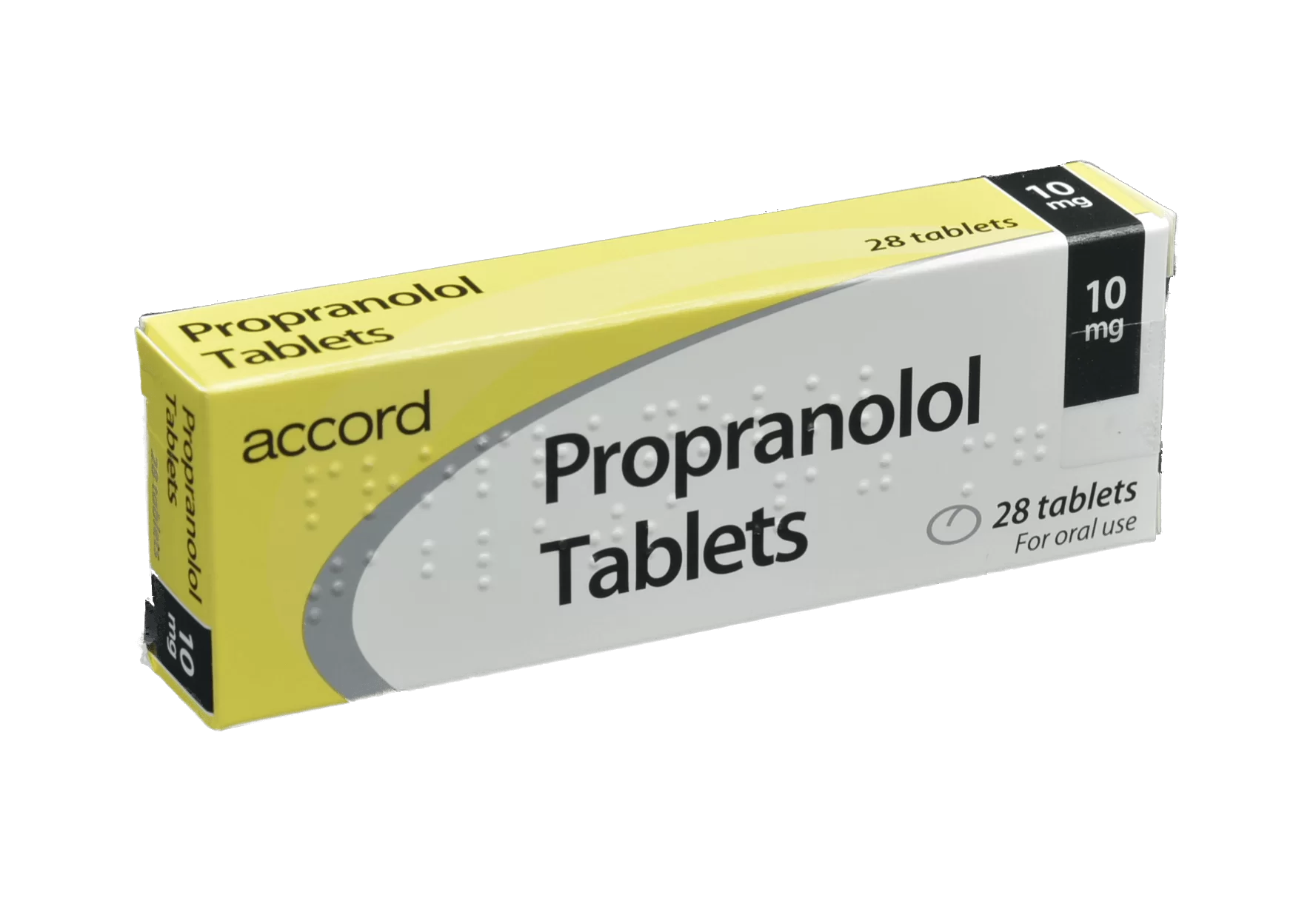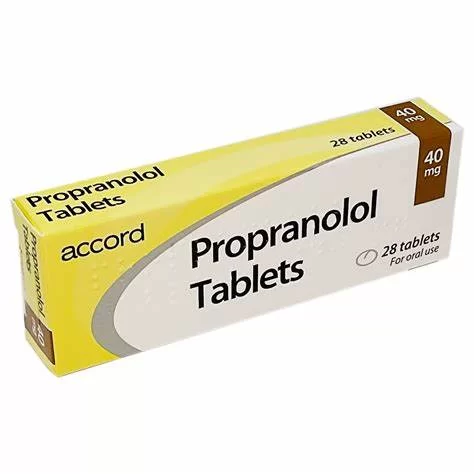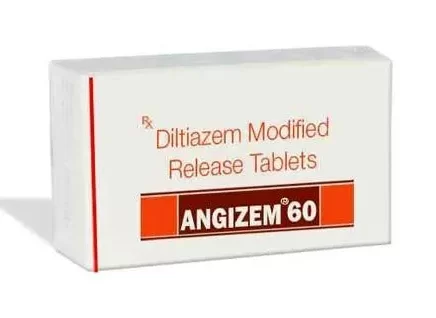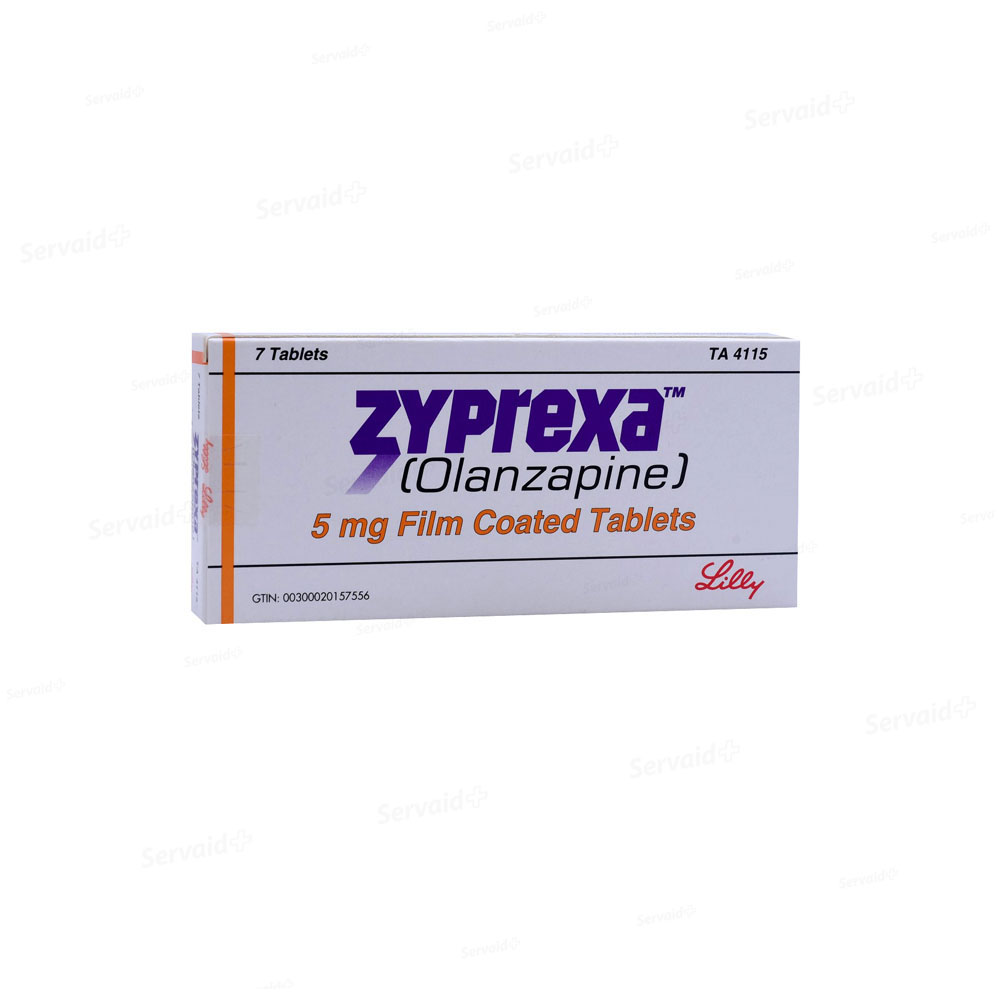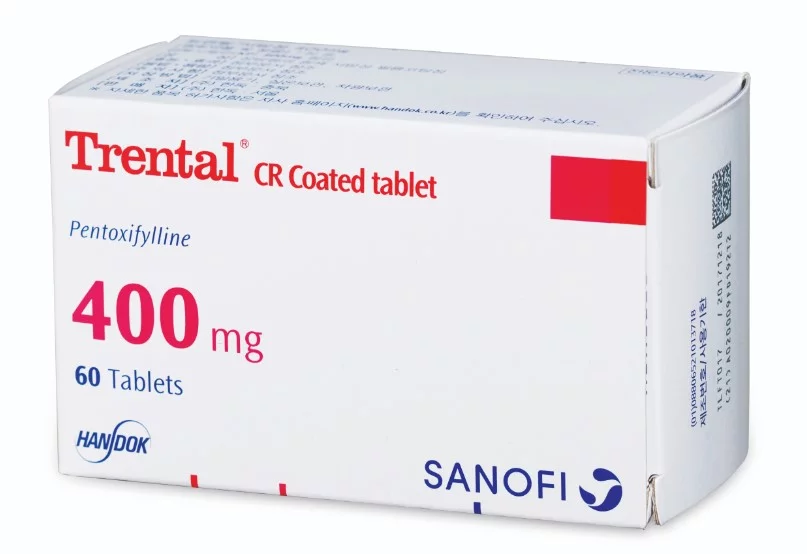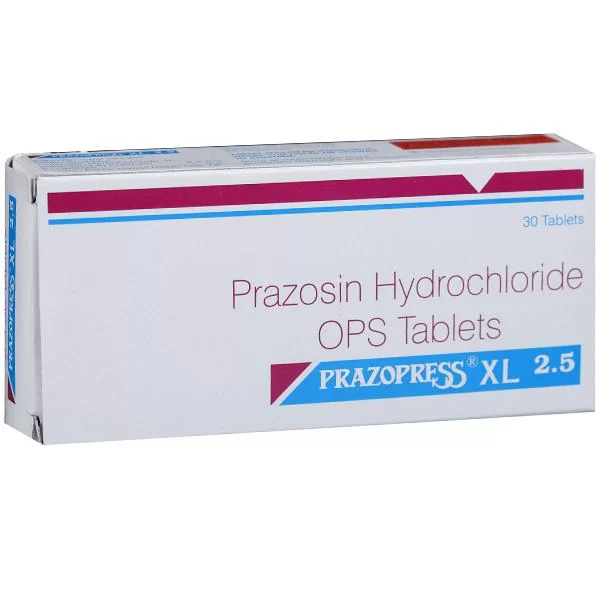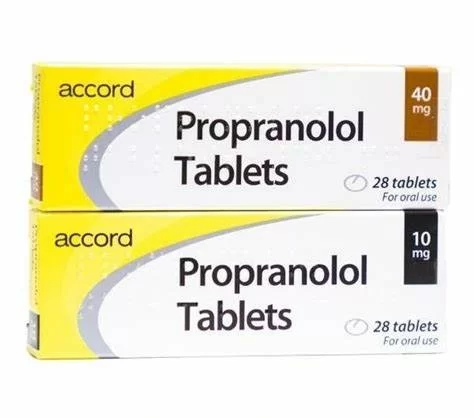
Propranolol
Propranolol - 80mg
| Product | Per Pill | Savings | Per Pack | Order |
|---|---|---|---|---|
| 60 pills | $0.72 | $43.32 | Buy Now | |
| 90 pills | $0.61 | $10.14 | $64.98 $54.84 | Buy Now |
| 120 pills | $0.55 | $20.27 | $86.64 $66.37 | Buy Now |
| 180 pills | $0.50 | $40.55 | $129.96 $89.41 | Buy Now |
| 270 pills | $0.46 | $70.96 | $194.94 $123.98 | Buy Now |
| 360 pills | $0.44 | $101.37 | $259.92 $158.55 | Buy Now |
Propranolol - 40mg
| Product | Per Pill | Savings | Per Pack | Order |
|---|---|---|---|---|
| 60 pills | $0.55 | $32.92 | Buy Now | |
| 90 pills | $0.47 | $7.51 | $49.38 $41.87 | Buy Now |
| 120 pills | $0.42 | $15.01 | $65.83 $50.82 | Buy Now |
| 180 pills | $0.38 | $30.02 | $98.75 $68.73 | Buy Now |
| 270 pills | $0.35 | $52.54 | $148.13 $95.59 | Buy Now |
| 360 pills | $0.34 | $75.05 | $197.50 $122.45 | Buy Now |
Propranolol - 20mg
Overview of Propranolol
General Introduction to Propranolol
- Propranolol is a non-selective beta-blocker widely used to treat a variety of cardiovascular conditions. Initially introduced in the 1960s, it was the first beta-blocker to be marketed and remains one of the most extensively studied and prescribed medications in its class. Propranolol works by blocking beta-adrenergic receptors in the heart and blood vessels, reducing heart rate, cardiac output, and blood pressure. It is used to manage conditions such as hypertension, angina, arrhythmias, myocardial infarction, and essential tremor, as well as for prophylaxis of migraine headaches.
Key Benefits and Unique Properties of Propranolol
- Versatile Therapeutic Uses: Propranolol is effective in managing a wide range of cardiovascular and non-cardiovascular conditions.
- Reduction of Heart Rate: Helps lower heart rate, which is beneficial in conditions like arrhythmias and angina.
- Blood Pressure Control: Effectively reduces blood pressure in patients with hypertension.
- Migraine Prophylaxis: Reduces the frequency and severity of migraine attacks.
- Anxiety Management: Used off-label for the management of situational anxiety and performance anxiety due to its calming effects on the heart rate.
- Thyroid Storm Management: Used in hyperthyroidism to control symptoms such as rapid heart rate and tremors.
- Post-MI Therapy: Improves survival rates in patients who have suffered a myocardial infarction by reducing the workload on the heart and preventing further ischemic episodes.
Effectiveness of Propranolol
- Numerous clinical studies have confirmed the efficacy of Propranolol in reducing morbidity and mortality in cardiovascular diseases. It is particularly effective in preventing second heart attacks and managing hypertension and arrhythmias. Its efficacy in migraine prophylaxis and anxiety management has also been well documented.
Safety and Tolerability of Propranolol
- Propranolol is generally well-tolerated, with side effects being dose-dependent. Common side effects include fatigue, dizziness, and gastrointestinal disturbances. Serious side effects, although rare, can include bronchospasm, bradycardia, and hypotension. Regular monitoring and appropriate dose adjustments can help mitigate these risks.
Indications for Use of Propranolol
Diseases and Conditions Treated by Propranolol
- Propranolol is indicated for the treatment of hypertension, angina pectoris, cardiac arrhythmias, myocardial infarction, hypertrophic subaortic stenosis, essential tremor, pheochromocytoma (adjunctive), migraine prophylaxis, and anxiety.
Primary Symptoms and Indications for Propranolol
- Hypertension: Reduces blood pressure by decreasing heart rate and cardiac output.
- Angina Pectoris: Alleviates chest pain by reducing myocardial oxygen demand.
- Arrhythmias: Controls abnormal heart rhythms by stabilizing cardiac electrical activity.
- Post-Myocardial Infarction: Prevents recurrent heart attacks by lowering heart workload.
- Essential Tremor: Reduces tremor amplitude and frequency.
- Migraine Prophylaxis: Decreases the frequency and severity of migraine headaches.
- Anxiety: Used off-label to manage situational and performance anxiety by reducing physical symptoms such as tachycardia and trembling.
Dosage and Administration of Propranolol
Recommended Dosage of Propranolol
- The dosage of Propranolol varies depending on the condition being treated. For hypertension, the usual starting dose is 40 mg twice daily, which can be adjusted based on patient response. For angina, the typical dose ranges from 80-320 mg per day in divided doses. For arrhythmias, doses of 10-30 mg three to four times daily are common. In migraine prophylaxis, the dose typically starts at 80 mg per day and can be increased to 160-240 mg per day as needed.
Timing and Frequency of Propranolol Administration
- Hypertension: Administered twice daily, with adjustments based on response.
- Angina and Arrhythmias: Divided doses, typically 2-4 times per day.
- Migraine Prophylaxis: Once or twice daily, depending on the required dose.
- Anxiety: Taken 30-60 minutes before an anxiety-provoking event.
Additional Recommendations for Propranolol Use
- Proper Use: Follow the dosing instructions provided by a healthcare professional. Do not skip doses or discontinue use without consulting your healthcare provider.
- Missed Dose: If a dose is missed, take it as soon as remembered unless it is almost time for the next dose. Do not double the dose to make up for the missed one.
- Monitoring: Regular blood pressure and heart rate monitoring are recommended to ensure efficacy and safety.
Mechanism of Action of Propranolol
Description of Propranolol Mechanism
- Propranolol works by blocking beta-adrenergic receptors in the heart and blood vessels. These receptors normally respond to catecholamines like adrenaline, which increase heart rate and force of contraction. By blocking these receptors, Propranolol reduces the heart rate, myocardial contractility, and cardiac output, leading to decreased blood pressure and reduced oxygen demand by the heart.
Biochemical Processes Involving Propranolol
- Beta-Blockade: Inhibits the action of adrenaline and noradrenaline on beta-1 and beta-2 receptors.
- Decreased Sympathetic Outflow: Reduces the sympathetic nervous system activity, leading to lower heart rate and blood pressure.
- Vasodilation: Indirectly promotes vasodilation by reducing sympathetic tone, helping to lower blood pressure.
Physiological Effects of Propranolol
- Heart Rate Reduction: Slows down the heart rate, which is beneficial in arrhythmias and hypertension.
- Reduced Myocardial Oxygen Demand: Decreases the oxygen requirements of the heart, alleviating angina.
- Blood Pressure Control: Lowers blood pressure by decreasing cardiac output and promoting vasodilation.
- Migraine Prevention: Modulates neural activity that contributes to migraine attacks.
- Anxiety Relief: Reduces physical symptoms of anxiety, such as palpitations and trembling.
Composition of Propranolol
Active Ingredients in Propranolol
- The active ingredient in Propranolol is propranolol hydrochloride, which functions as a non-selective beta-adrenergic receptor blocker.
Inactive Ingredients in Propranolol
- Inactive ingredients may include microcrystalline cellulose, lactose monohydrate, magnesium stearate, and other excipients depending on the formulation. These ingredients help stabilize the formulation and ensure proper delivery of the medication.
Side Effects of Propranolol
General Introduction
- Understanding potential side effects helps ensure the safe use of Propranolol. Patients should be aware of common and serious side effects to monitor their health effectively while on the medication.
Possible Side Effects of Propranolol
- Common Side Effects: Fatigue, dizziness, gastrointestinal disturbances (nausea, vomiting, diarrhea), and cold extremities. These side effects are usually mild and transient.
- Less Common Side Effects: Bradycardia, hypotension, bronchospasm, and depression.
- Serious Side Effects: Rare but serious side effects include severe bradycardia, heart block, heart failure, and severe hypotension. Immediate medical attention is required if any serious side effects occur.
Frequency and Severity of Propranolol Side Effects
- Common side effects are generally mild and do not significantly interfere with daily activities. Severe side effects are rare but can be serious, necessitating immediate medical intervention. Regular follow-ups and patient education on correct usage can minimize risks.
Prevention of Side Effects of Propranolol
General Introduction
- Preventing side effects is key to maximizing the therapeutic benefits of Propranolol. By following preventive measures, patients can reduce the likelihood of experiencing adverse reactions.
Tips for Preventing Propranolol Side Effects
- Proper Technique: Use Propranolol as directed, following the instructions for proper administration.
- Regular Monitoring: Regular check-ups with healthcare providers can help detect and manage potential side effects early.
- Healthy Practices: Maintain a healthy lifestyle, including a balanced diet and regular exercise, to support overall cardiovascular health.
- Consult Healthcare Providers: Inform your healthcare provider about any other medications or supplements to avoid potential interactions.
Contraindications for Propranolol
General Introduction
- Understanding contraindications ensures the safe use of Propranolol. Certain conditions and diseases may preclude the use of this medication.
Conditions and Diseases Contraindicating Propranolol
- Hypersensitivity: Patients with a known hypersensitivity to Propranolol or any of its components should not use this medication. Allergic reactions can include symptoms such as rash, itching, swelling, and difficulty breathing.
- Asthma and COPD: Contraindicated in patients with asthma or chronic obstructive pulmonary disease (COPD) due to the risk of bronchospasm.
- Severe Bradycardia: Should not be used in patients with severe bradycardia or certain types of heart block.
- Heart Failure: Contraindicated in patients with decompensированным сердечным недостаточностью.
Warnings/Precautions for Propranolol
General Introduction
- Following precautions is essential to ensure the safe and effective use of Propranolol. Patients should be informed about potential risks and how to mitigate them.
Important Warnings for Propranolol
- Heart Rate and Blood Pressure Monitoring: Regularly monitor heart rate and blood pressure to avoid bradycardia and hypotension.
- Gradual Dose Adjustment: Avoid abrupt discontinuation of Propranolol to prevent withdrawal symptoms such as rebound hypertension and angina.
- Diabetes Monitoring: Monitor blood glucose levels as Propranolol can mask symptoms of hypoglycemia.
Precautions for Propranolol Use
- Regular Monitoring: Regular check-ups with healthcare providers are essential to monitor for potential side effects and ensure effective treatment.
- Patient Education: Patients should be educated on the proper use of Propranolol, recognizing signs of serious side effects, and when to seek medical help.
Missed Dose of Propranolol
General Introduction
- Proper management of missed doses helps maintain effective treatment outcomes. Patients should be aware of how to handle missed doses to avoid disruptions in their treatment regimen.
Steps to Take if a Dose is Missed
- Timely Action: Take the missed dose as soon as remembered unless it is almost time for the next dose.
- Avoid Doubling: Do not double the dose to make up for the missed one. Instead, continue with the next dose as scheduled.
Tips for Adherence to Dosing Schedule
- Set Reminders: Use alarms or reminders on your phone to remember to take your doses.
- Consistent Routine: Take the medication at the same time every day to reduce the likelihood of missing a dose.
- Medication Organizer: Use a pill organizer to keep track of your doses and avoid missing any.
Drug Interactions with Propranolol
General Introduction
- Understanding drug interactions is crucial for ensuring the safe use of Propranolol. Some medications can affect the action of Propranolol or increase the risk of side effects.
Examples of Drug Interactions
- Calcium Channel Blockers: Using Propranolol with calcium channel blockers (e.g., verapamil, diltiazem) can increase the risk of bradycardia and hypotension.
- Antihypertensives: Combining Propranolol with other antihypertensive medications can lead to excessive lowering of blood pressure.
- Nonsteroidal Anti-Inflammatory Drugs (NSAIDs): NSAIDs like ibuprofen can reduce the effectiveness of Propranolol in controlling blood pressure.
- Antidiabetic Medications: Propranolol can mask the symptoms of hypoglycemia, requiring careful monitoring of blood glucose levels.
Preventing Negative Interactions
- Inform Healthcare Providers: Inform your healthcare provider about all medications and supplements you are taking.
- Monitor for Symptoms: Watch for signs of side effects or unusual reactions and report them to your healthcare provider promptly.
Overdose of Propranolol
Symptoms of Overdose
- Common Symptoms: Nausea, vomiting, dizziness, and severe fatigue.
- Severe Symptoms: Signs of bradycardia, hypotension, heart failure, and bronchospasm.
Immediate Actions in Case of Overdose
- Seek Medical Help: Immediately seek medical attention if an overdose is suspected.
- Supportive Measures: Medical personnel may provide supportive measures such as monitoring vital signs, administering activated charcoal, and providing symptomatic treatment.
Pharmacokinetics of Propranolol
Absorption
- Rate and Extent: Propranolol is well-absorbed after oral administration, with peak plasma concentrations occurring within 1-4 hours.
Distribution
- Tissue Distribution: Widely distributed throughout body tissues, including the central nervous system.
Metabolism
- Metabolic Pathways: Metabolized in the liver primarily by cytochrome P450 enzymes.
Elimination
- Excretion: Excreted primarily in the urine as metabolites.
- Half-Life: The half-life of Propranolol ranges from 3 to 6 hours.
Dosage Forms of Propranolol
Available Forms and Strengths
- Oral Tablets: 10 mg, 20 mg, 40 mg, 60 mg, 80 mg.
- Extended-Release Capsules: 60 mg, 80 mg, 120 mg, 160 mg.
- Injectable Solutions: 1 mg/mL for intravenous use.
Advantages of Different Forms
- Oral Tablets: Suitable for daily management of chronic conditions.
- Extended-Release Capsules: Provide a sustained release for once-daily dosing.
- Injectable Solutions: Used for acute management of arrhythmias and hypertensive crises.
Pregnancy and Breastfeeding
Safety During Pregnancy
- Risks to Fetus: The safety of Propranolol during pregnancy has not been fully established. It should be used during pregnancy only if the potential benefits justify the potential risks to the fetus.
- Recommendations: Careful monitoring is required if Propranolol is used during pregnancy, particularly in the third trimester, as it can affect fetal heart rate and blood sugar levels.
Safety During Breastfeeding
- Excretion in Breast Milk: Propranolol is excreted in breast milk in small amounts.
- Recommendations: Caution is advised when Propranolol is administered to breastfeeding mothers. Monitoring for potential adverse effects in the infant is recommended.
Storage Conditions
General Storage Recommendations
- Storage Temperature: Store at room temperature between 20°C to 25°C (68°F to 77°F).
- Protection from Light and Moisture: Keep in the original packaging, protected from light and moisture.
Shelf Life
- Expiration Date: Check the expiration date on the package and do not use the medication after it has expired.
Clinical Trials and Efficacy
Overview of Clinical Trials
- Study Design and Methods: Clinical trials include randomized controlled trials assessing the efficacy and safety of Propranolol in the treatment of various cardiovascular and non-cardiovascular conditions.
Key Findings and Conclusions
- Efficacy Results: Studies have shown that Propranolol is effective in reducing blood pressure, preventing migraines, controlling arrhythmias, and improving survival rates post-myocardial infarction.
- Safety Profile: Side effects are generally mild and transient, with serious side effects being rare when used correctly.
Conclusion
Summary of Key Aspects:
- Propranolol is a versatile beta-blocker that effectively manages a wide range of cardiovascular and non-cardiovascular conditions. It provides significant benefits in controlling blood pressure, preventing migraines, and managing arrhythmias.
Recommendations for Improving Therapy:
- Follow healthcare professional instructions to optimize treatment and minimize the risk of side effects. Regular check-ups and informing your doctor of any health changes will help maintain the effectiveness of the therapy.
Final Conclusion:
- Propranolol provides essential support in managing hypertension, angina, arrhythmias, and other conditions, helping to improve the quality of life for patients. Proper use and adherence to precautions maximize the therapeutic benefits and minimize risks.
